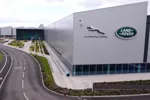Fast stock turn is a known profit driver, but how do used car retailers strike the right balance between speed and profitability?
Statistics from leading suppliers show premium prepared vehicles sell quicker because dealers are looking for retail-ready cars that will be snapped up on their own forecourts. However, part-exchange vehicles are more likely to undergo a pre-delivery inspection (PDI) in-house to avoid the cost of a move off-site and back again.
Cambria Automobiles, which operates 42 franchises across 17 brands at 27 locations, and Hendy Group, with its 49 used car outlets, 46 of which are franchised, spread across southern England, adopt different approaches, although both are in-house.
Eight years ago, Cambria introduced specialist PDI technicians at each dealership, with teams of up to five in larger businesses that report to the sales manager. Combined with other measures, vehicle prep time is down to just 36 hours from seven days.
Mark Lavery, the group’s chief executive, said he would not consider outsourcing for several reasons, including the quality of the PDI. He said in-house PDIs were carried out by factory-trained technicians who are also stakeholders in the business and committed to ensuring it is right first time.
“The key is when the car touches down, it’s offered for sale within 36 hours. If you leave it any longer, it starts losing money. The quicker you turn that car into cash, the quicker you can reinvest and the quicker you can go again,” he said.
Lavery’s specialist preparation process means the aftersales department remains focused on retail service and repair work, whereas its PDI techs are sales-orientated.
He said: “Working for the sales manager, the technician’s priorities are different. If the technician was working for service and doing PDIs, he may find a lot more work and that would increase the price of the preparation.”
The business sets a budget per unit and any likely overspend must be authorised by the sales manager after the initial appraisal is looked at again. The car is imaged, videoed and uploaded by the dealership’s product ‘genius’ to ensure digital assets are in place as soon as the car is offered for sale.
Lavery said: “It’s a depreciating asset, so you need to get it to market as quickly as you can. You can’t do that if you are using an external provider.”
Hendy Group is establishing three of its own off-site preparation centres. About 70% of its used car stock is from part-exchanges, and the issues include moving vehicles off-site to the prep centre and back again and whether service departments can replace the PDI work.
Used car sales director Simon Palmer said: “It would free up a franchised site service department to concentrate purely on retail work, which has a far better recovery rate than any internal work. It would help us with same-day deliveries, what we lose in time moving a vehicle off-site, we gain hopefully in speed of turnaround.
“Having a forecourt of pre-prepared vehicles increases your gross margins because you are dealing with known costs.
“The key driver is can we replace those internal hours with retail hours? Given that the service parc is shrinking, service intervals are longer and with the arrival of alternative fuel vehicles which require less maintenance, it could be a gamble.”
He added: “Our average reconditioning costs per unit across the group are £350. If a sales manager thinks it’s £250 per unit, he may just give that extra £100 away to the consumer. By having it internally, managing it very tightly and having standards that are not ambiguous giving both sales and aftersales the opportunity to earn more money, I think we get the best of both worlds, which is why any prep centre we use, we will run ourselves.”
When it comes to sourcing used car stock at auction, the best-prepped cars sell faster, as dealers are able to offer them for sale in a relatively short space of time.
Stuart Pearson, BCA’s chief operating officer for UK remarketing, said: “Vehicles looking their best attract significantly higher buyer interest, leading to more first-time conversions and an improved sales performance.
“There is a noticeable and appreciable improvement in sales performance when vehicles are presented in ‘ready to retail’ condition, for the professional buyer to take away and sell without delay. Conversion rates improve, meaning the average time to sale is reduced and holding costs are decreased.”
BCA recommends integrating refurbishment activity with the remarketing programme for better capacity planning and to speed up the process. As well as retail-standard presentation and condition, dealers need to ensure vehicles offered for sale have V5, MOT, service history, spare keys, locking wheel nuts, sat-nav disks and any other items that make the car complete. Many leasing companies use BCA’s mid-life inspections to identify any issues before they become expensive to repair.
Pearson said: “With increasing volumes of vehicles being sold digitally, presentation is also important for online buyers in combination with high-quality imaging, accurate appraisals and realistic grading.”
In a recent dealer survey from Cox Automotive, which operates auction and remarketing provider Manheim, 85% cited reconditioning work as the cause of the biggest delay between sourcing a vehicle and putting it up for sale. Refurbishment and repair remain the highest costs when calculating vehicle margin, with 61% of dealers identifying it as having the biggest impact on the sale of a vehicle.
Philip Nothard, Cox Automotive’s customer insight and strategy director for cars, said: “Many retailers are willing to pay premium prices for ready-to-retail vehicles, but those that take on part-exchanges or buy lower-grade stock need to mitigate the time and cost of reconditioning. One way to do this is through a focus on accurate part-exchange appraisals, which allows dealers to calculate profit margin opportunities and market pricing.”
A recent study from Cap HPI suggested that a standard used family hatchback such as a Ford Focus can depreciate by an average of £7 per day, equating to £28 per car based on an average of four days to list the vehicle.
Nothard said: “Not every dealer, whether large or small, has the capacity and funding to invest in preparation centres big enough to be cost-effective. In many cases, it’s possible to reduce turnaround times and improve cost-effectiveness by working closely with a dedicated reconditioning partner, allowing the retailer to focus on their own area of specialism.”
Martin Potter, Aston Barclay Group’s managing director of auctions, said: “Every single one of our vendors that outsources Aston Barclay for pre- or post-auction refurbishment has broad rules in place, but then each car is still treated in isolation. In a buoyant market, refurbing a car from a D or E to a C grade is worth the investment in time prior to sale as you will generally get your money back and more when it goes under the hammer.”
He said franchised buyers can reduce their stocking days by buying pre-repaired stock at the vendor’s cost, but they should expect bidding to be higher to reflect the cost to the seller.
“For franchised groups selling, the uplift in value will generate increased returns for part-exchange stock and allow quicker wholesale stock turn. The secret is to work with the best suppliers that will provide the best outcome.”
DEBBIE KIRLEW















mine'sanST - 03/12/2019 13:50
As with most things in life there are things that are desirable and some that are not so and this surely applies to used vehicles. Specialists in this field will know what vehicles can be re-sold in a short turn around time and those which due to their rarity, colour, specification etc may take a little longer. To hold on to it in the hope it sells (unless there is a healthy margin in it), is futile. If strict preparation guidelines are instilled and the specialists carrying out the the vehicle condition assessments prior to agreeing valuation with the customer are applying it correctly, refurbishment costs will be tightly controlled. On the other hand, if the evaluation of the incoming vehicle condition is not tightly controlled and the relevant amounts are not calculated in the part exchange allowance and preparing that vehicle for onward sale, we run the risk of the next customer being the "quality controller". We have seen the average repair cost of damaged vehicles through our bodyshop industry increase this year for what appear to be very light impacts, due to factors beyond their control, so we need to ensure we allow proper parameters when calculating refurbishment costs - especially if another department other than the one which completed the initial appraisal, is picking up the tab!